How AI is Streamlining Military Training Programs
In today's rapidly evolving battlefield, the need for effective and efficient military training has never been more critical. Enter artificial intelligence (AI), a game-changer that is transforming how armed forces prepare their personnel. Imagine a world where soldiers can train in hyper-realistic environments, receive instant feedback on their performance, and adapt their learning paths based on their unique strengths and weaknesses. With AI at the helm, this is not just a dream; it’s becoming a reality. The integration of AI into military training programs is not only enhancing soldier preparedness but is also reshaping the very fabric of how military operations are conducted in modern warfare.
AI technologies are revolutionizing military training by providing personalized learning experiences, real-time feedback, and advanced simulation capabilities. Gone are the days of one-size-fits-all training. Instead, AI tailors the training experience to fit the individual needs of each soldier. This means that whether a soldier is a seasoned veteran or a fresh recruit, they can engage in training that is relevant and challenging. AI systems analyze vast amounts of data to create scenarios that mimic real-world challenges, ensuring that soldiers are not just learning but are also applying their knowledge in practical situations. The result? A more prepared and capable military force ready to face the complexities of contemporary combat.
One of the standout features of AI in military training is the use of AI-driven simulations. These immersive environments replicate real-world scenarios, allowing military personnel to practice decision-making and tactical skills without the risks associated with live training exercises. Imagine a soldier engaging in a virtual battlefield where every decision they make has consequences, all while being monitored by AI that provides insights into their performance. This type of training not only enhances skills but also builds confidence, as soldiers can learn from their mistakes in a safe setting.
AI systems excel at analyzing vast amounts of data to create realistic training scenarios. This capability helps soldiers develop critical thinking and quick decision-making skills that are essential in high-pressure situations. Consider the analogy of a chess player: the more they play, the better they become at anticipating their opponent's moves. Similarly, soldiers exposed to AI-driven simulations can learn to foresee potential threats and react accordingly, honing their instincts in the process.
Another significant advantage of AI in military training is the provision of real-time feedback. AI tools offer immediate insights during training exercises, allowing trainees to understand their strengths and weaknesses. This accelerates the learning process and improves overall performance. Instead of waiting for a debriefing session, soldiers can adjust their tactics on the fly, making them more adaptable and responsive to changing scenarios.
Adaptive learning systems powered by AI adjust training content based on individual performance. This means that each soldier receives tailored instruction that meets their unique needs and learning pace. Just like a personal trainer who modifies workout routines based on progress, AI ensures that training is always relevant and challenging. This personalized approach not only facilitates better learning outcomes but also boosts morale, as soldiers feel more invested in their training journey.
The combination of AI with virtual and augmented reality is a groundbreaking advancement in military training. These technologies create lifelike environments where soldiers can practice skills and strategies in a safe, controlled setting. Imagine being able to walk through a virtual city, encountering simulated threats, and practicing responses without ever stepping foot outside a training facility. This innovative approach not only enhances realism but also allows for repeated practice of complex scenarios, ensuring soldiers are well-prepared for any situation.
Implementing AI in military training can significantly reduce costs associated with traditional training methods. This includes expenses related to travel, equipment maintenance, and resource allocation. With AI, military organizations can streamline operations, leading to improved training outcomes and reduced waste.
AI algorithms help military organizations optimize resource allocation, ensuring that time and materials are used efficiently. This resource optimization is akin to a chef who knows exactly how much of each ingredient is needed to create a perfect dish, minimizing waste while maximizing flavor. In the same way, AI ensures that every aspect of military training is fine-tuned for effectiveness.
Investing in AI-driven training systems can lead to substantial long-term savings. By decreasing the need for expensive live exercises and enhancing overall operational readiness, military organizations can allocate funds to other critical areas. Think of it as investing in a high-quality tool that pays for itself over time by making tasks easier and more efficient.
Despite the numerous benefits, integrating AI into military training programs is not without challenges. These include technological limitations, data security concerns, and the need for comprehensive training for personnel.
Current AI technologies may not fully replicate the complexities of real combat situations. This requires continuous advancements to enhance their effectiveness in military training environments. Just as a car needs regular maintenance to function optimally, AI systems must evolve to meet the demands of modern warfare.
The use of AI raises significant concerns regarding data security and the potential for sensitive information to be compromised. This necessitates robust cybersecurity measures to protect military assets. Imagine a fortress—if the walls are weak, the entire structure is at risk. In the same way, military organizations must build strong defenses around their data to safeguard their operations.
The future of military training will likely see increased reliance on AI technologies. Advancements in machine learning, data analytics, and virtual reality will shape the way soldiers prepare for combat.
As AI technologies evolve, military training programs will incorporate continuous learning models that adapt to emerging threats and changing operational environments. This ensures soldiers remain prepared for any challenge, much like a skilled athlete who trains year-round to stay at the top of their game.
Military organizations will increasingly collaborate with tech companies to leverage cutting-edge AI solutions. This partnership fosters innovation and enhances the effectiveness of training programs, ensuring they meet modern warfare demands. Just as a great band collaborates to create a hit song, military and tech companies can work together to produce training solutions that resonate with the challenges of today’s battlefield.
- How does AI improve military training?
AI enhances military training by providing personalized learning experiences, real-time feedback, and advanced simulations that replicate real-world scenarios. - What are the cost benefits of AI training programs?
AI training programs can significantly reduce costs associated with traditional training methods, such as travel and equipment maintenance, while improving training outcomes. - What challenges exist in implementing AI in military training?
Challenges include technological limitations, data security concerns, and the need for comprehensive training for personnel. - What does the future hold for AI in military training?
The future will likely see increased reliance on AI technologies, continuous learning models, and collaborations with tech companies to enhance training effectiveness.

The Role of AI in Military Training
Artificial Intelligence (AI) is not just a buzzword; it's a game-changer in the realm of military training. Imagine a world where soldiers can train in environments that mimic real combat situations, receiving personalized instruction tailored to their unique strengths and weaknesses. This is the reality that AI brings to the table, transforming traditional training methods into cutting-edge programs that enhance efficiency and effectiveness.
At the core of AI's impact on military training is its ability to provide personalized learning experiences. Gone are the days of one-size-fits-all training. With AI, each soldier can receive customized content that adapts to their learning pace and style. For example, if a soldier struggles with specific tactical maneuvers, AI can adjust the training modules to focus more on those areas, ensuring comprehensive skill development.
Moreover, AI technologies enable real-time feedback, which is crucial for improving performance. During training exercises, AI systems analyze actions and decisions, offering immediate insights that help soldiers understand what they did right and where they can improve. This instant feedback loop accelerates the learning process, making it not only more effective but also more engaging for trainees.
Another significant aspect of AI in military training is its advanced simulation capabilities. These simulations create immersive environments that replicate real-world scenarios, allowing military personnel to practice decision-making and tactical skills without the risks associated with live training exercises. For instance, AI-driven simulations can recreate complex battlefields where soldiers can experiment with different strategies, learning from their successes and failures in a safe space.
In addition to these benefits, AI also enhances operational effectiveness. By analyzing vast amounts of data, AI systems can generate realistic training scenarios that challenge soldiers to think critically and make quick decisions under pressure. This is particularly important in modern warfare, where the ability to adapt and respond rapidly can mean the difference between success and failure.
However, the implementation of AI in military training is not without its challenges. While the technology offers numerous benefits, it also requires significant investment in infrastructure and training for personnel to effectively utilize these advanced systems. As military organizations navigate these challenges, the potential for AI to revolutionize training programs remains immense.
- How is AI personalized in military training?
AI analyzes individual performance data to tailor training content, ensuring that each soldier receives the instruction they need to excel. - What are the benefits of AI simulations?
AI simulations provide a safe environment for soldiers to practice decision-making and tactical skills without the risks associated with live exercises. - Are there any challenges in implementing AI?
Yes, challenges include technological limitations and the need for robust data security measures to protect sensitive information.
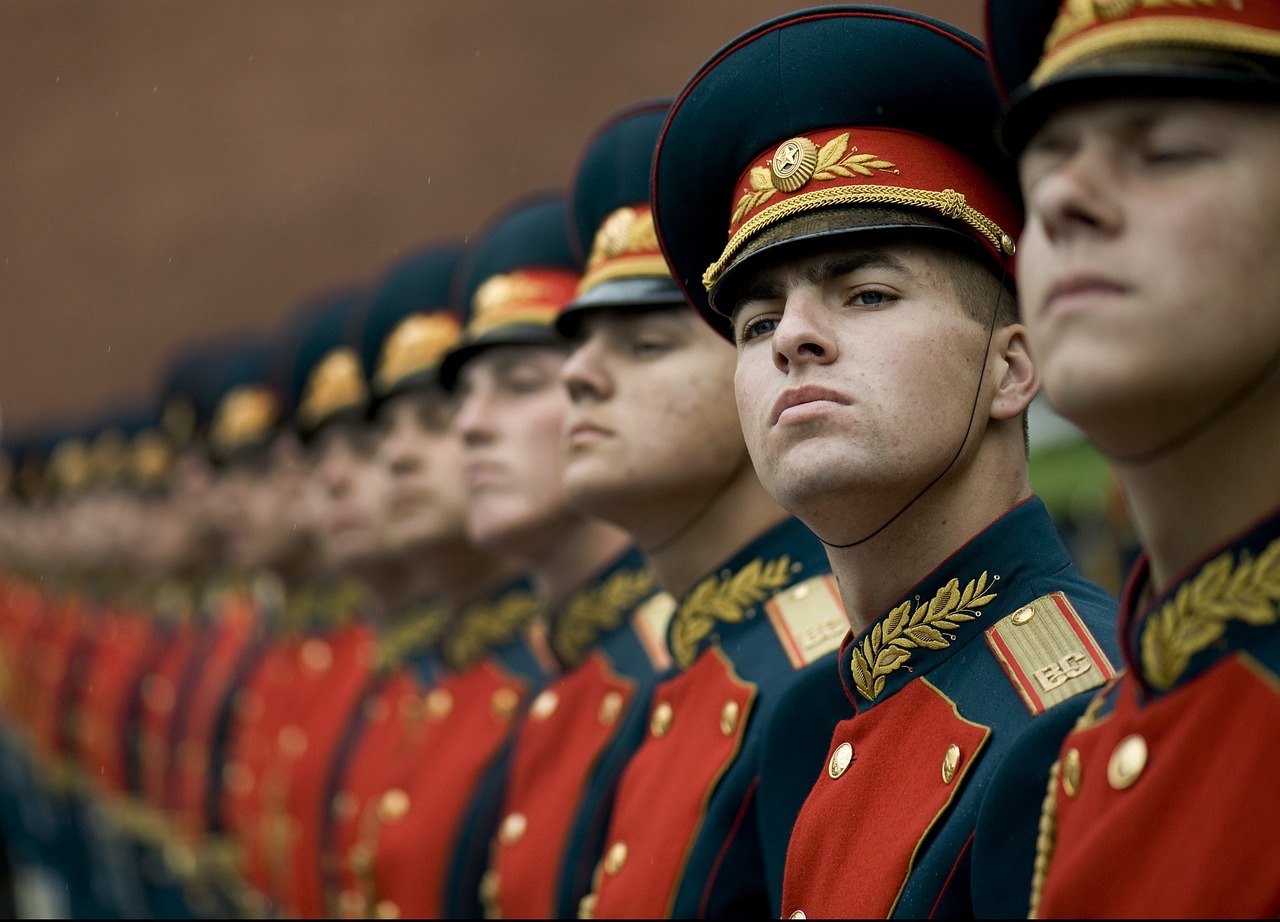
Benefits of AI-Driven Training Simulations
AI-driven training simulations are not just a trend; they are a **revolution** in how military personnel prepare for real-world challenges. Imagine being able to step into a fully immersive environment that mirrors the complexities of actual combat situations without the inherent risks. This is exactly what AI simulations offer. They create a **safe space** where soldiers can hone their skills, make mistakes, and learn from them without the fear of real-world consequences. The ability to practice in these lifelike settings is invaluable, as it builds confidence and competence.
One of the standout features of AI-driven simulations is their ability to replicate **real-world scenarios** with astonishing accuracy. By analyzing data from previous missions and conflicts, AI can generate training environments that reflect current threats and tactics. This not only prepares soldiers for what they might face but also allows them to engage in strategic thinking and tactical planning. The simulations can be tailored to different branches of the military, ensuring that each unit receives relevant training that meets their specific operational needs.
Moreover, the **immersive nature** of these simulations fosters a deeper understanding of the battlefield dynamics. Soldiers can practice various scenarios repeatedly, refining their decision-making processes and learning to adapt to rapidly changing situations. For instance, during a simulated mission, they might encounter unexpected challenges that require quick thinking and adaptability. This kind of training is akin to a video game, where players must think on their feet, but with much higher stakes. The result? Soldiers who are not only well-prepared but also mentally agile when faced with real threats.
Another significant advantage of AI-driven simulations is the **real-time feedback** they provide. Unlike traditional training methods, where feedback might come days or weeks later, AI systems can analyze performance instantly. This immediate feedback loop allows soldiers to identify their strengths and weaknesses in real-time. For example, if a soldier struggles with a particular tactic during a simulation, the AI can highlight this, offering tailored suggestions for improvement. This immediate correction and guidance can drastically shorten the learning curve, making training more efficient and effective.
Furthermore, the adaptability of AI-driven training systems cannot be overstated. These systems use **adaptive learning technologies** that adjust the training content based on individual performance. This means that if one soldier excels in a specific area, the system can present more advanced challenges, while another who may need more practice can receive additional foundational training. This personalized approach ensures that every soldier progresses at their own pace, maximizing their potential and readiness.
In summary, the benefits of AI-driven training simulations are profound and far-reaching. They provide a **risk-free environment** for soldiers to practice, enhance critical decision-making skills, offer immediate feedback, and adapt training to individual needs. As military training continues to evolve, embracing these technologies will be essential for maintaining a competitive edge on the battlefield.
- What are AI-driven training simulations?
AI-driven training simulations are advanced training systems that use artificial intelligence to create realistic and immersive training environments for military personnel.
- How do these simulations improve training outcomes?
They provide personalized learning experiences, real-time feedback, and realistic scenarios that enhance decision-making and tactical skills.
- Are there any risks associated with AI-driven simulations?
While they are designed to be safe, challenges such as technological limitations and data security concerns must be addressed to ensure effectiveness.
- Can these simulations replace live training exercises?
They complement live training by providing a safe environment for practice, but they do not fully replace the need for real-world exercises.
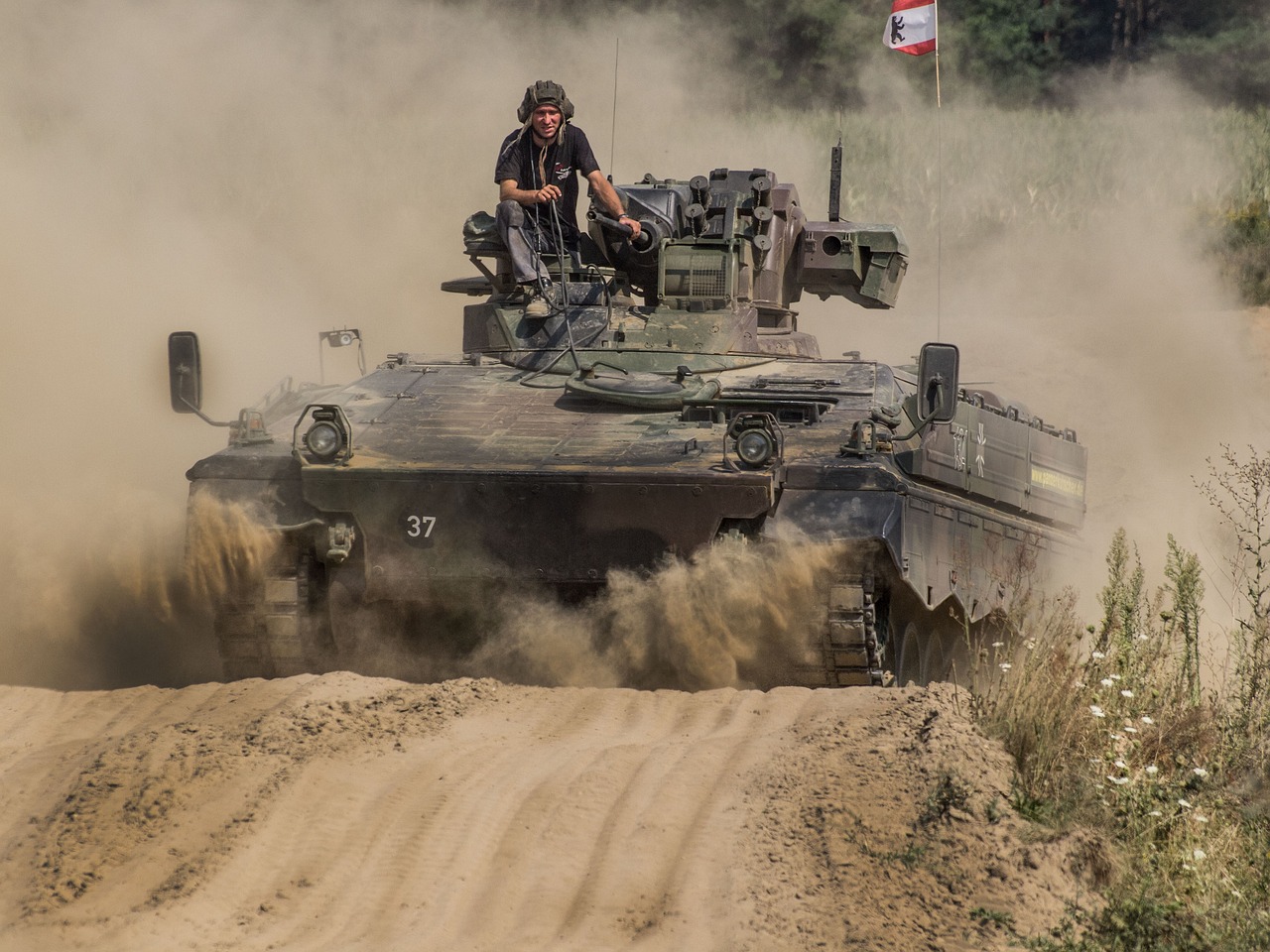
Enhanced Decision-Making Skills
In the realm of military training, the ability to make quick and effective decisions can be the difference between success and failure on the battlefield. Artificial Intelligence (AI) is stepping in as a game changer, providing soldiers with tools that enhance their decision-making skills like never before. Imagine a scenario where a soldier is faced with multiple threats and limited time to react. With AI-driven simulations, they can practice navigating these high-stakes situations in a safe environment, allowing them to hone their instincts and judgment under pressure.
AI systems analyze vast amounts of data from various sources, including historical combat scenarios, real-time intelligence, and even psychological profiles of adversaries. This data is then used to create realistic training scenarios that challenge soldiers to think critically and make decisions swiftly. For instance, an AI simulation might present a soldier with a situation where they must choose between several tactical options, each with its own risks and rewards. By engaging in these simulations repeatedly, soldiers learn to weigh their options and anticipate outcomes, significantly improving their tactical acumen.
Moreover, the feedback provided during these training exercises is invaluable. After each simulation, AI systems can assess the choices made by the trainee, highlighting what worked, what didn’t, and why. This real-time feedback loop accelerates the learning process, allowing soldiers to refine their decision-making skills continuously. They can learn from their mistakes in a controlled setting, which is far preferable to facing the consequences of poor decisions in real combat.
To further illustrate the impact of AI on decision-making skills, let’s consider a few key advantages:
- Critical Thinking Development: AI simulations encourage soldiers to analyze situations and think critically, fostering a mindset that is essential for effective leadership.
- Speed of Response: The ability to make quick decisions is paramount in combat; AI training helps soldiers practice this skill until it becomes second nature.
- Scenario Variety: AI can generate countless unique scenarios, exposing soldiers to a wide range of potential situations they may encounter in the field.
In conclusion, the integration of AI into military training programs is not just about technology; it’s about enhancing the very core of what it means to be a soldier. By improving decision-making skills through realistic simulations and immediate feedback, AI is preparing military personnel to face the complexities of modern warfare with confidence and competence.
- How does AI improve military training? AI enhances military training by providing personalized learning experiences, real-time feedback, and advanced simulations that replicate real-world scenarios.
- What are the benefits of AI-driven training simulations? AI-driven simulations create immersive environments for practicing decision-making and tactical skills, which reduces risks associated with live training.
- Can AI completely replace traditional training methods? While AI significantly enhances training, it is meant to complement traditional methods, not replace them entirely.
- What challenges does AI face in military training? Challenges include technological limitations, data security concerns, and the need for comprehensive training for personnel to effectively use AI systems.

Real-Time Feedback Mechanisms
In the fast-paced environment of military training, are crucial for enhancing the learning experience. Imagine you're in the middle of a high-stakes training exercise, and every move you make is being analyzed and evaluated instantaneously. This is the power of AI-driven feedback systems. They provide immediate insights into a soldier's performance, allowing them to adjust their tactics and strategies on the fly. This not only helps in correcting mistakes but also reinforces good practices, making training sessions more productive and engaging.
One of the most remarkable aspects of these feedback mechanisms is their ability to break down complex scenarios into digestible insights. For instance, after a simulated mission, soldiers can receive detailed reports that highlight their decision-making processes, communication effectiveness, and even emotional responses during the exercise. These reports can cover various aspects, such as:
- Accuracy: How well did the soldier perform their tasks?
- Timing: Were decisions made promptly?
- Team Coordination: How effectively did they work with their unit?
By focusing on these key performance indicators, trainers can tailor follow-up sessions to address specific weaknesses, ensuring that each soldier is on a path to improvement. Furthermore, the integration of AI allows for the collection of vast amounts of data over time, enabling trainers to identify trends and patterns in performance. This long-term analysis can lead to more effective training programs that evolve alongside the soldiers' needs.
Additionally, the real-time feedback provided by AI systems fosters a culture of continuous learning. Instead of waiting for a post-exercise debrief, soldiers receive instant critiques that allow them to reflect and adapt in real-time. This immediacy not only boosts confidence but also cultivates a mindset geared towards constant improvement. In the military, where every second counts, this kind of feedback can be the difference between success and failure in real combat situations.
In summary, real-time feedback mechanisms powered by AI are transforming military training into a dynamic and responsive process. By providing immediate insights and fostering a culture of continuous learning, these systems ensure that soldiers are always prepared for the challenges they may face on the battlefield.
- What is real-time feedback in military training? Real-time feedback refers to immediate evaluations provided to soldiers during training exercises, helping them understand their performance and make necessary adjustments on the spot.
- How does AI enhance feedback mechanisms? AI analyzes performance data quickly, offering detailed insights and suggestions for improvement, which helps soldiers learn more effectively and efficiently.
- Can real-time feedback improve decision-making skills? Yes, real-time feedback helps soldiers develop critical thinking and quick decision-making skills by providing them with immediate performance evaluations.
- Are there any challenges associated with implementing real-time feedback? Yes, challenges include ensuring data security and the need for personnel training to effectively utilize these AI systems.

Adaptive Learning Technologies
Adaptive learning technologies are transforming the landscape of military training by providing a tailored educational experience that meets the individual needs of each soldier. Imagine stepping into a training environment that adjusts itself based on your performance, much like a personal trainer who knows exactly when to push you harder or when to ease off. This personalized approach not only enhances learning but also significantly boosts the confidence and competence of military personnel.
At the heart of adaptive learning is the ability to analyze a soldier's progress in real-time. These systems utilize advanced algorithms to assess performance metrics, identifying strengths and weaknesses as the training unfolds. For instance, if a soldier excels in tactical simulations but struggles with marksmanship, the system can adapt by providing more focused drills on shooting techniques. This level of customization ensures that every soldier receives the right mix of challenges and support, ultimately leading to a more skilled and prepared force.
Moreover, adaptive learning technologies can incorporate various multimedia resources, such as videos, interactive simulations, and even gamified elements, to keep trainees engaged. The use of these diverse formats caters to different learning styles, whether a soldier is a visual learner who benefits from watching scenarios unfold or a kinesthetic learner who thrives on hands-on practice. By accommodating these preferences, adaptive learning not only makes training more effective but also more enjoyable, which is crucial in maintaining motivation and morale.
Another exciting aspect of adaptive learning is its ability to provide ongoing assessments. Unlike traditional training methods that might rely on periodic tests, adaptive systems continuously evaluate a soldier’s performance, allowing for immediate adjustments to the training curriculum. This dynamic feedback loop means that soldiers can progress at their own pace, ensuring that no one is left behind. It’s akin to having a GPS that reroutes you based on real-time traffic conditions—always guiding you toward your destination in the most efficient way possible.
In summary, adaptive learning technologies are not just a trend; they represent a significant evolution in how military training is conducted. By personalizing the training experience, utilizing diverse learning materials, and facilitating continuous assessment, these technologies are ensuring that soldiers are not only prepared for the challenges of modern warfare but are also engaged and motivated throughout their training journey.
- What are adaptive learning technologies? Adaptive learning technologies are systems that customize educational experiences based on individual performance and learning preferences, enhancing the effectiveness of training.
- How do adaptive learning technologies benefit military training? They provide personalized instruction, continuous assessments, and varied learning formats, ensuring that each soldier receives the training they need to succeed.
- Can adaptive learning technologies be integrated with other training tools? Yes, they can work alongside simulations, virtual reality, and other training methods to create a comprehensive learning environment.
- Are there any challenges in implementing adaptive learning technologies? While there are benefits, challenges include the need for robust infrastructure, data security, and ensuring that personnel are trained to use these systems effectively.
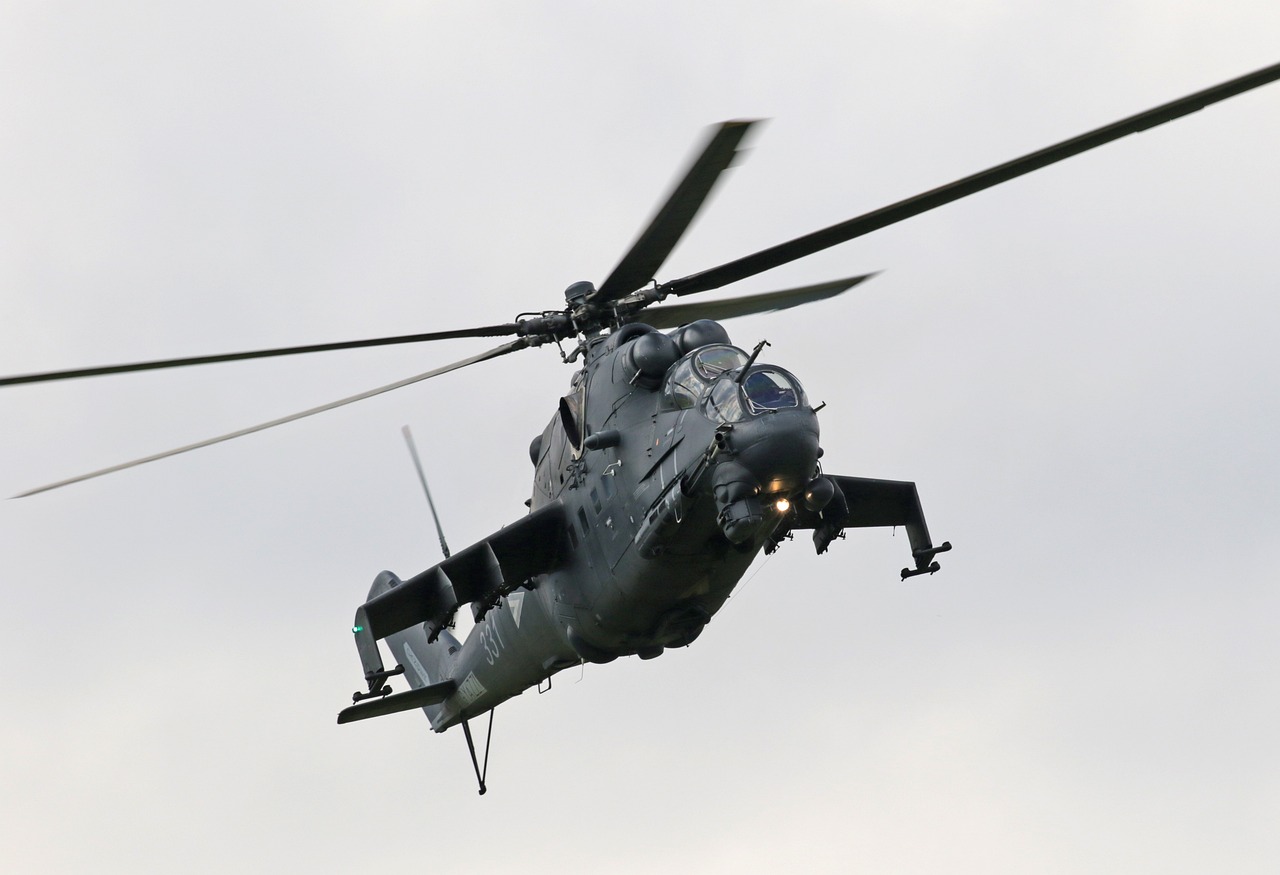
Integration of Virtual and Augmented Reality
Imagine stepping into a world where the lines between reality and simulation blur, creating a training environment that feels as real as the battlefield itself. This is the essence of integrating Virtual Reality (VR) and Augmented Reality (AR) into military training programs. These technologies are not just fancy gadgets; they are powerful tools that revolutionize how soldiers prepare for combat. With VR, trainees can immerse themselves in lifelike scenarios, while AR overlays critical information onto their real-world surroundings, enhancing situational awareness. This dual approach creates a comprehensive training experience that engages multiple senses and cognitive skills.
One of the primary advantages of using VR and AR in military training is the ability to simulate complex environments without the inherent risks of live training exercises. For instance, soldiers can practice urban warfare tactics in a virtual city where they encounter dynamic challenges, such as hostile forces or civilian interactions, all while receiving real-time feedback on their performance. This not only builds their tactical skills but also fosters teamwork and communication, essential elements in high-stakes operations.
Moreover, the adaptability of these technologies is remarkable. Training scenarios can be altered on-the-fly to reflect new intelligence or changing mission parameters. This flexibility allows military trainers to create specific challenges tailored to the needs of their units, ensuring that every training session is relevant and impactful. As soldiers navigate through these virtual landscapes, they develop not just technical skills but also critical thinking and problem-solving abilities that are crucial in unpredictable combat situations.
Additionally, VR and AR technologies can be integrated with AI systems to create an even more robust training platform. AI can analyze each soldier's performance during these simulations, providing insights into their decision-making processes, strengths, and areas for improvement. This data-driven approach allows for a personalized training experience, where soldiers can focus on specific skills they need to enhance, making the training process more efficient and effective.
As we look to the future, the potential for VR and AR in military training is vast. Continuous advancements in technology will only enhance the realism and effectiveness of these training programs. Imagine a day when soldiers can train in virtual environments that are indistinguishable from reality, preparing them for any challenge they might face on the battlefield. The integration of VR and AR is not just a trend; it is a fundamental shift in how military training is approached, ensuring that soldiers are not just prepared but excel in their missions.
- What are the main benefits of using VR and AR in military training?
VR and AR provide immersive training experiences, enhance situational awareness, and allow for real-time feedback, all of which improve soldier preparedness. - How does AI enhance VR and AR training?
AI analyzes performance data to create personalized training experiences, ensuring that soldiers focus on their unique strengths and weaknesses. - Are there any risks associated with using VR and AR in training?
While these technologies are generally safe, there may be concerns about over-reliance on simulations, which could lead to a lack of experience in real-world scenarios. - What is the future of VR and AR in military training?
The future looks promising, with continuous advancements expected to enhance realism and effectiveness, ensuring soldiers are thoroughly prepared for combat.

Cost-Effectiveness of AI Training Programs
Implementing artificial intelligence in military training is not just a trend; it’s a game-changer that brings about significant cost savings while enhancing training outcomes. Traditional training methods often come with hefty price tags due to expenses related to travel, equipment maintenance, and resource allocation. However, AI-driven training programs can streamline these processes, leading to more efficient use of resources and ultimately saving money.
One of the primary ways AI reduces costs is by minimizing the need for extensive live exercises. These exercises, while invaluable, require substantial funding for logistics, personnel, and equipment. On the other hand, AI simulations can provide realistic training environments without the associated risks and costs of live training. Imagine being able to practice complex scenarios in a virtual world where the only limit is your imagination—this is the promise of AI training.
Moreover, AI algorithms play a crucial role in resource optimization. By analyzing data and predicting training needs, these systems ensure that military organizations allocate their resources—time, materials, and personnel—more effectively. For instance, AI can help identify which training modules are most beneficial for specific units, allowing for targeted training that maximizes impact while minimizing waste. This targeted approach not only saves money but also enhances the overall effectiveness of training programs.
In addition to immediate cost savings, investing in AI-driven training systems can lead to long-term financial benefits. The initial investment in technology may seem daunting, but the potential for substantial savings is significant. By reducing reliance on expensive live exercises and improving operational readiness, military organizations can allocate funds more strategically. Here’s a brief breakdown of potential long-term savings:
| Cost Factors | Traditional Training Costs | AI-Driven Training Costs |
|---|---|---|
| Travel Expenses | High | Minimal |
| Equipment Maintenance | Significant | Reduced |
| Resource Allocation | Extensive | Optimized |
| Overall Cost | Very High | Cost-Effective |
As military operations become increasingly complex, the need for cost-effective training solutions becomes even more critical. AI not only addresses this need but does so in a way that enhances the quality of training. With adaptive learning technologies, training can be tailored to individual soldiers, ensuring that each person receives the instruction they need at a fraction of the cost of traditional methods. This personalized approach not only improves learning outcomes but also fosters a culture of continuous improvement within military ranks.
- How does AI improve military training? AI enhances military training by providing personalized learning experiences, real-time feedback, and advanced simulations that replicate real-world scenarios.
- What are the cost benefits of AI training programs? AI training programs reduce costs related to travel, equipment maintenance, and resource allocation while improving training outcomes.
- Are there any challenges in implementing AI in military training? Yes, challenges include technological limitations, data security concerns, and the need for comprehensive training for personnel.
- What is the future of AI in military training? The future will likely see increased reliance on AI technologies, with advancements in machine learning and virtual reality shaping training programs.

Resource Optimization
In today's fast-paced military landscape, has become a critical component of effective training programs. With the integration of AI technologies, military organizations can significantly enhance the way they allocate resources, ensuring that every asset—be it time, personnel, or equipment—is utilized to its fullest potential. Imagine a scenario where a military unit can train without the logistical burdens of traditional methods; this is where AI steps in as a game-changer.
AI algorithms analyze historical training data and operational requirements to identify the most efficient ways to deploy resources. For instance, by predicting the optimal number of troops needed for a particular exercise or determining the best locations for training sessions, military leaders can minimize waste and maximize effectiveness. This level of precision not only saves money but also enhances the overall quality of training. Consider the following benefits:
- Time Efficiency: AI can streamline scheduling by analyzing availability and readiness, allowing for more flexible and effective training sessions.
- Equipment Utilization: By monitoring equipment usage and maintenance needs, AI ensures that resources are available when and where they are needed most.
- Personnel Management: AI systems can help identify skill gaps within units, allowing for targeted training that optimizes personnel deployment.
Moreover, the ability to simulate various scenarios using AI means that military personnel can train in environments that closely mimic real-life conditions without the associated costs of live exercises. This not only conserves resources but also provides a richer training experience. For example, instead of conducting multiple live-fire exercises, soldiers can engage in virtual simulations that offer the same level of tactical training without the wear and tear on equipment or the logistical challenges of moving personnel and gear.
As we look to the future, the potential for AI-driven resource optimization in military training is vast. By continually refining algorithms and leveraging real-time data analytics, the military can adapt its training programs to meet evolving threats while ensuring that resources are used judiciously. This approach not only enhances operational readiness but also fosters a culture of innovation and efficiency within military ranks.
- What is resource optimization in military training?
Resource optimization refers to the strategic allocation and management of resources such as time, personnel, and equipment to enhance the effectiveness and efficiency of military training programs. - How does AI contribute to resource optimization?
AI contributes by analyzing data to predict needs, streamline scheduling, and monitor equipment usage, allowing military organizations to make informed decisions that maximize resource efficiency. - What are the benefits of AI-driven training simulations?
AI-driven simulations provide immersive environments for soldiers to practice skills without the risks of live training, enhance decision-making, and offer real-time feedback for continuous improvement. - Are there any challenges in implementing AI for resource optimization?
Yes, challenges include technological limitations, data security concerns, and the need for personnel training to effectively use AI systems.

Long-Term Financial Savings
This article explores the transformative role of artificial intelligence in enhancing military training, making it more efficient, effective, and adaptable to modern warfare challenges.
AI technologies are revolutionizing military training by providing personalized learning experiences, real-time feedback, and advanced simulation capabilities that enhance soldier preparedness and operational effectiveness.
AI-driven simulations offer immersive environments that replicate real-world scenarios, allowing military personnel to practice decision-making and tactical skills without the risks associated with live training exercises.
AI systems analyze vast amounts of data to create realistic scenarios, helping soldiers develop critical thinking and quick decision-making skills essential for success in high-pressure situations.
AI tools provide immediate feedback during training exercises, allowing trainees to understand their strengths and weaknesses, which accelerates the learning process and improves overall performance.
Adaptive learning systems adjust training content based on individual performance, ensuring that each soldier receives tailored instruction that meets their unique needs and learning pace.
Combining AI with virtual and augmented reality enhances training by creating lifelike environments where soldiers can practice skills and strategies in a safe, controlled setting.
Implementing AI in military training can significantly reduce costs associated with traditional training methods, such as travel, equipment maintenance, and resource allocation, while improving training outcomes.
AI algorithms help military organizations optimize resource allocation, ensuring that time and materials are used efficiently, leading to more effective training programs and reduced waste.
Investing in AI-driven training systems may lead to substantial long-term savings by decreasing the need for expensive live exercises and enhancing overall operational readiness. Imagine a scenario where traditional training methods require extensive travel, equipment, and personnel costs. With AI, these expenses can be dramatically reduced. Here are a few key areas where long-term savings can be realized:
- Reduction in live training exercises: AI simulations can replace many live exercises, which are not only costly but also logistically challenging.
- Lower maintenance costs: Traditional training equipment often incurs high maintenance fees. AI systems, especially those that are virtual, can mitigate these expenses.
- Efficient use of time: With AI, training can be conducted on-demand, reducing the need for extensive scheduling and allowing soldiers to train when it’s most convenient.
By reallocating funds saved from these areas, military organizations can invest in further technological advancements, ensuring that soldiers are always equipped with the best resources available. This cycle of improvement not only enhances training but also fortifies the overall operational capabilities of the military.
Despite its benefits, integrating AI into military training programs presents challenges, including technological limitations, data security concerns, and the need for comprehensive training for personnel.
Current AI technologies may not fully replicate the complexities of real combat situations, requiring continuous advancements to enhance their effectiveness in military training environments.
The use of AI raises significant concerns regarding data security and the potential for sensitive information to be compromised, necessitating robust cybersecurity measures to protect military assets.
The future of military training will likely see increased reliance on AI technologies, with advancements in machine learning, data analytics, and virtual reality shaping the way soldiers prepare for combat.
As AI technologies evolve, military training programs will incorporate continuous learning models that adapt to emerging threats and changing operational environments, ensuring soldiers remain prepared for any challenge.
Military organizations will increasingly collaborate with tech companies to leverage cutting-edge AI solutions, fostering innovation and enhancing the effectiveness of training programs to meet modern warfare demands.
- How does AI improve military training efficiency?
AI streamlines training by offering personalized experiences, real-time feedback, and advanced simulations that replicate real-world scenarios. - What are the cost benefits of AI in military training?
AI reduces costs associated with traditional training methods, such as travel and equipment maintenance, while improving overall training outcomes. - What challenges does AI face in military training?
Key challenges include technological limitations, data security concerns, and the need for comprehensive training for personnel on new systems. - What is the future of AI in military training?
The future will likely see increased reliance on AI, with continuous learning models and collaborations with tech companies to enhance training effectiveness.

Challenges in Implementing AI in Military Training
While the integration of artificial intelligence into military training programs presents numerous advantages, it is not without its challenges. One of the most significant hurdles is the technological limitations inherent in current AI systems. Although these technologies have advanced remarkably, they still struggle to fully replicate the complexities of real combat situations. For instance, scenarios that require nuanced human emotions, unpredictable enemy behavior, or rapidly changing environments can be difficult for AI to accurately model. This limitation necessitates continuous advancements in AI capabilities to enhance their effectiveness in military training environments.
Another pressing concern is data security and privacy. The utilization of AI in military contexts means handling vast amounts of sensitive data. This raises significant questions about the potential for data breaches and the compromise of classified information. Military organizations must implement robust cybersecurity measures to protect against these risks. The reality is that as AI systems become more advanced, they also become more attractive targets for cyber attacks. Therefore, safeguarding military assets and ensuring the integrity of training data is paramount.
Moreover, the successful implementation of AI in military training requires comprehensive training for personnel. Soldiers and trainers must be equipped with the necessary skills to operate AI-driven systems effectively. This involves not only understanding how to use these technologies but also being able to interpret the data and feedback generated by them. Without adequate training, the potential benefits of AI could be undermined, leading to ineffective training outcomes.
In summary, while the promise of AI in military training is immense, addressing these challenges is crucial for realizing its full potential. Military organizations must invest in technological advancements, enhance data security protocols, and provide thorough training for personnel to ensure that AI-driven training programs are both effective and secure.
- What are the main challenges in implementing AI in military training?
The main challenges include technological limitations, data security concerns, and the need for comprehensive personnel training. - How does AI improve military training?
AI improves military training by providing personalized learning experiences, real-time feedback, and advanced simulation capabilities. - What measures can be taken to enhance data security in AI military training?
Implementing robust cybersecurity measures and continuously updating security protocols can help protect sensitive data. - Will AI replace traditional military training methods?
While AI will enhance training methods, it is unlikely to fully replace traditional methods, as real-world experience remains invaluable.

Technological Limitations
The integration of artificial intelligence into military training programs is undoubtedly a game-changer, but it comes with its own set of technological limitations that must be addressed. One of the primary concerns is that current AI systems may not fully replicate the complexities of real combat situations. While AI can simulate various scenarios, the unpredictable nature of warfare—characterized by chaos, rapid changes, and human emotions—poses a significant challenge for these systems.
For instance, AI-driven simulations can create realistic environments and scenarios, yet they often lack the nuanced understanding of human behavior that can dramatically influence outcomes in actual combat. This limitation means that while soldiers can practice tactics in a controlled setting, they may not be fully prepared for the unexpected decisions they will need to make in real life. As such, military training programs must find a balance between the benefits of AI simulations and the essential experience gained through live training exercises.
Moreover, the technology itself is constantly evolving, and military organizations must keep pace with advancements to ensure that their training programs remain relevant and effective. This can lead to a significant investment in research and development, as well as the continuous updating of training modules to incorporate the latest AI capabilities. The challenge lies not just in the technology itself but also in the need for military personnel to adapt to these changes rapidly.
In addition to these challenges, there are also issues related to interoperability. Different branches of the military may use varying AI systems, and ensuring that these systems can communicate and function together seamlessly is crucial for effective training. This requires a standardized approach to technology adoption and implementation across the board, which can be a daunting task.
To illustrate the technological limitations further, consider the following table that outlines some of the key challenges faced by military organizations in implementing AI technologies:
| Challenge | Description |
|---|---|
| Complexity of Combat | AI struggles to replicate the unpredictable nature of real-life combat scenarios. |
| Rapid Technological Advancements | Continuous updates are needed to keep training programs relevant and effective. |
| Interoperability Issues | Diverse AI systems across military branches may hinder effective communication and training. |
Ultimately, while AI presents revolutionary opportunities for enhancing military training, it is essential to recognize and address these technological limitations. Continuous improvements and a focus on integrating human elements into AI-driven training will be vital to ensure that soldiers are not just trained in theory but are also prepared for the unpredictable realities of warfare.
- What are the main benefits of using AI in military training? AI enhances training through personalized learning experiences, real-time feedback, and advanced simulations that improve soldier readiness.
- How does AI improve decision-making skills in soldiers? AI analyzes vast data to create realistic scenarios, helping soldiers develop critical thinking and quick decision-making skills.
- What are some challenges faced when implementing AI in military training? Challenges include technological limitations, data security concerns, and the need for personnel training.
- Will AI replace traditional military training methods? No, AI will complement traditional methods, providing additional layers of training and preparedness.

Data Security and Privacy Concerns
As we dive deeper into the integration of artificial intelligence within military training programs, one of the most pressing issues that arises is the concern over data security and privacy. With the increasing reliance on AI systems, vast amounts of sensitive data are collected, processed, and analyzed. This data often includes personal information about military personnel, operational strategies, and even classified intelligence. The potential for this information to be compromised is a significant risk that military organizations must address.
Imagine a scenario where hackers gain access to a military training program's database. They could potentially manipulate training simulations or expose sensitive information that could jeopardize national security. This is not just a theoretical concern; there have been instances in the past where cyberattacks have targeted military networks, leading to devastating consequences. Therefore, it’s crucial for military organizations to implement robust cybersecurity measures that ensure the integrity of their training programs.
To mitigate these risks, military organizations are adopting several strategies:
- Encryption: All sensitive data should be encrypted both in transit and at rest, making it difficult for unauthorized users to access it.
- Access Controls: Implementing strict access controls ensures that only authorized personnel can access sensitive information, reducing the risk of internal breaches.
- Regular Audits: Conducting regular security audits helps identify potential vulnerabilities in the system, allowing organizations to address them proactively.
- Employee Training: Ensuring that personnel are trained in cybersecurity best practices is vital to prevent human error, which is often the weakest link in security.
Furthermore, as AI systems become more sophisticated, the challenge of ensuring data privacy becomes even more complex. With machine learning algorithms processing vast datasets to improve training outcomes, there is a risk that these systems could inadvertently expose personal information. Military organizations must therefore establish clear guidelines on data usage and ensure compliance with privacy regulations.
In conclusion, while the integration of AI into military training offers numerous benefits, it also brings significant data security and privacy challenges. By prioritizing cybersecurity measures and fostering a culture of awareness among personnel, military organizations can harness the power of AI while safeguarding sensitive information.
Q: What are the main data security concerns with AI in military training?
A: The main concerns include unauthorized access to sensitive information, potential manipulation of training data, and the risk of cyberattacks that could compromise operational security.
Q: How can military organizations protect sensitive data?
A: They can implement encryption, strict access controls, regular security audits, and provide employee training on cybersecurity best practices.
Q: Is there a risk of AI systems exposing personal information?
A: Yes, as AI systems process large datasets, there is a risk that personal information could be exposed. Organizations must establish clear guidelines on data usage to mitigate this risk.
Q: Are there existing regulations that govern data privacy in military AI applications?
A: Yes, military organizations must comply with various data privacy regulations, which may vary by country. It is essential to ensure that AI applications adhere to these regulations.

Future Trends in AI Military Training
The landscape of military training is rapidly evolving, thanks in large part to the advancements in artificial intelligence. As we look to the future, it’s clear that AI will play a pivotal role in reshaping how soldiers prepare for combat. One of the most significant trends is the increased reliance on AI technologies, which will allow for more personalized and effective training experiences. Imagine a world where each soldier receives a training regimen tailored specifically to their strengths and weaknesses, all thanks to sophisticated AI algorithms that analyze performance data in real time.
Moreover, the integration of machine learning and data analytics will enable military training programs to adapt continuously. As new threats emerge and operational environments change, AI systems will update training modules to ensure that soldiers are always prepared for the unexpected. This dynamic approach to training will foster a culture of continuous learning and adaptation, making it essential for military personnel to stay ahead of the curve.
Another exciting trend is the collaboration between military organizations and technology companies. As the demand for innovative AI solutions grows, military branches will increasingly partner with tech firms to leverage cutting-edge developments. These collaborations can lead to the creation of advanced training tools, such as virtual reality simulations that provide immersive experiences, allowing soldiers to practice their skills in lifelike scenarios without the associated risks of live exercises.
In addition to these trends, the future of AI military training will also emphasize data-driven decision-making. By harnessing the power of big data, military leaders can gain insights into training effectiveness and operational readiness. This data-centric approach ensures that training programs are not only effective but also efficient, maximizing resource allocation and reducing waste.
As we embrace these advancements, it’s essential to consider the ethical implications and challenges that may arise. Issues such as data privacy and the security of sensitive information will need to be addressed as AI becomes more integrated into military training. However, with robust cybersecurity measures and a focus on responsible AI use, the benefits of these technologies can far outweigh the risks.
In summary, the future of AI in military training looks promising, with the potential to revolutionize how soldiers are trained and prepared for combat. By embracing AI technologies, military organizations can ensure that they are not only ready for today’s challenges but also equipped for the uncertainties of tomorrow.
- What are the main benefits of using AI in military training?
AI enhances training by providing personalized experiences, real-time feedback, and immersive simulations that replicate real-world scenarios. - How does AI improve decision-making skills in soldiers?
AI systems analyze vast amounts of data to create realistic scenarios, helping soldiers develop critical thinking and quick decision-making skills essential for success in high-pressure situations. - What role does collaboration with tech companies play in military training?
Collaboration with tech companies fosters innovation, leading to the development of advanced training tools that enhance the effectiveness of military training programs. - What challenges does the military face when implementing AI in training?
Challenges include technological limitations, data security concerns, and the need for comprehensive training for personnel to effectively use AI systems.
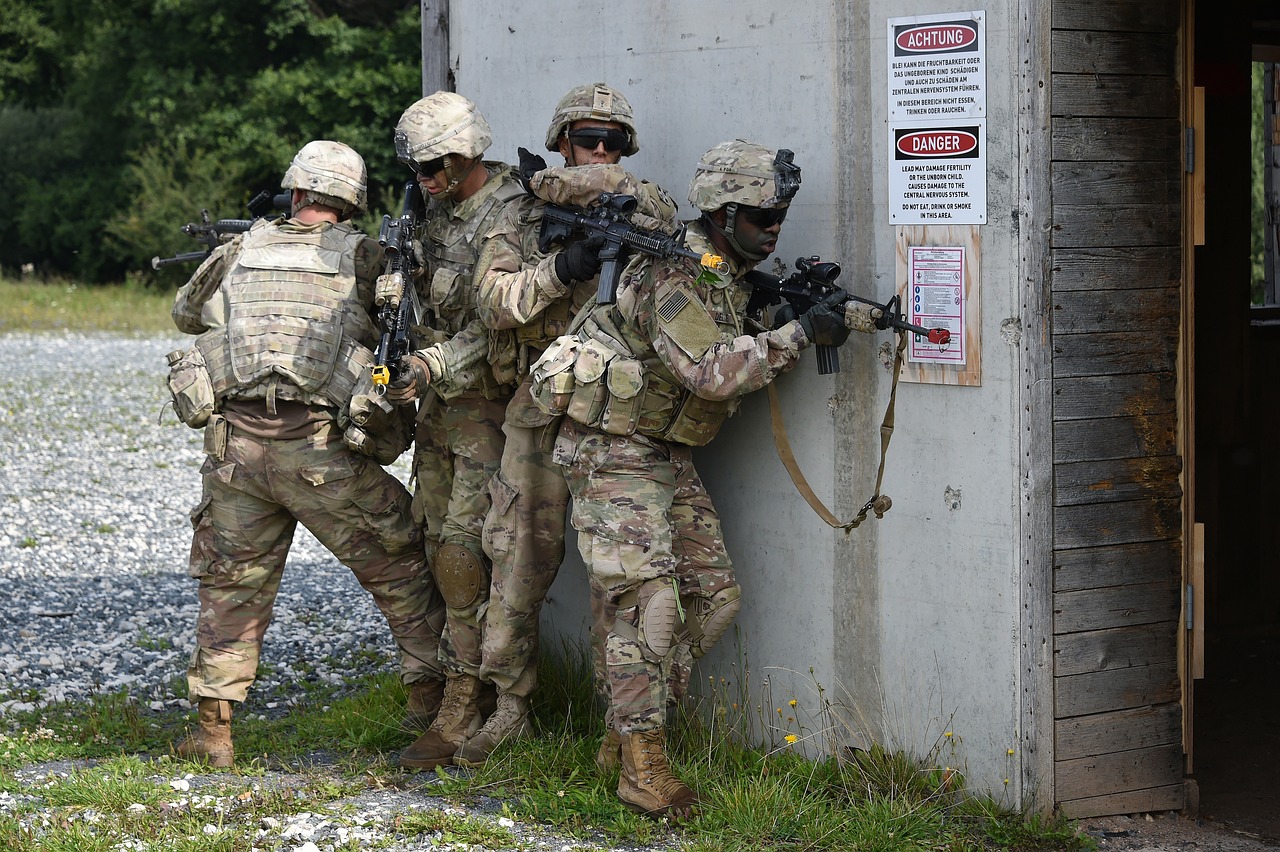
Continuous Learning and Adaptation
This article explores the transformative role of artificial intelligence in enhancing military training, making it more efficient, effective, and adaptable to modern warfare challenges.
AI technologies are revolutionizing military training by providing personalized learning experiences, real-time feedback, and advanced simulation capabilities that enhance soldier preparedness and operational effectiveness.
AI-driven simulations offer immersive environments that replicate real-world scenarios, allowing military personnel to practice decision-making and tactical skills without the risks associated with live training exercises.
AI systems analyze vast amounts of data to create realistic scenarios, helping soldiers develop critical thinking and quick decision-making skills essential for success in high-pressure situations.
AI tools provide immediate feedback during training exercises, allowing trainees to understand their strengths and weaknesses, which accelerates the learning process and improves overall performance.
Adaptive learning systems adjust training content based on individual performance, ensuring that each soldier receives tailored instruction that meets their unique needs and learning pace.
Combining AI with virtual and augmented reality enhances training by creating lifelike environments where soldiers can practice skills and strategies in a safe, controlled setting.
Implementing AI in military training can significantly reduce costs associated with traditional training methods, such as travel, equipment maintenance, and resource allocation, while improving training outcomes.
AI algorithms help military organizations optimize resource allocation, ensuring that time and materials are used efficiently, leading to more effective training programs and reduced waste.
Investing in AI-driven training systems may lead to substantial long-term savings by decreasing the need for expensive live exercises and enhancing overall operational readiness.
Despite its benefits, integrating AI into military training programs presents challenges, including technological limitations, data security concerns, and the need for comprehensive training for personnel.
Current AI technologies may not fully replicate the complexities of real combat situations, requiring continuous advancements to enhance their effectiveness in military training environments.
The use of AI raises significant concerns regarding data security and the potential for sensitive information to be compromised, necessitating robust cybersecurity measures to protect military assets.
The future of military training will likely see increased reliance on AI technologies, with advancements in machine learning, data analytics, and virtual reality shaping the way soldiers prepare for combat.
As the landscape of warfare evolves, so too must the training methodologies employed by military organizations. are critical components in ensuring that soldiers are not only prepared for today's challenges but are also equipped to handle the uncertainties of tomorrow. AI technologies facilitate this by providing dynamic training environments that evolve based on the latest intelligence and battlefield scenarios.
Imagine a training program that learns from every exercise, adapting to the strengths and weaknesses of each soldier. This is not just a dream; it’s becoming a reality. With AI, training modules can be updated in real time, reflecting new tactics, technologies, and threats. For instance, if a particular strategy proves ineffective during a simulation, the AI can quickly adjust the training curriculum to address this gap, ensuring that soldiers are always learning the most relevant skills.
Moreover, the integration of machine learning algorithms allows for a more personalized training experience. Each soldier's progress can be monitored, and the training can be tailored to fit their individual learning pace. This means that a soldier struggling with a specific tactic can receive additional resources and training focused solely on that area, while others can advance more quickly through content they have already mastered.
In essence, continuous learning through AI not only enhances individual soldier performance but also strengthens the overall effectiveness of military units. By fostering an environment of constant improvement, military organizations can ensure that their personnel are always at the forefront of readiness.
Military organizations will increasingly collaborate with tech companies to leverage cutting-edge AI solutions, fostering innovation and enhancing the effectiveness of training programs to meet modern warfare demands.
- What are the main benefits of AI in military training?
AI enhances military training by providing personalized learning, real-time feedback, and immersive simulations that replicate real-world scenarios.
- How does AI improve decision-making skills in soldiers?
AI analyzes data to create realistic training scenarios, helping soldiers develop critical thinking and quick decision-making skills essential for high-pressure situations.
- What challenges are associated with implementing AI in military training?
Challenges include technological limitations, data security concerns, and the need for comprehensive training for personnel to effectively use AI tools.
- How does continuous learning work in AI military training?
Continuous learning allows training programs to adapt in real time based on soldiers' performance, ensuring they receive tailored instruction that meets their evolving needs.
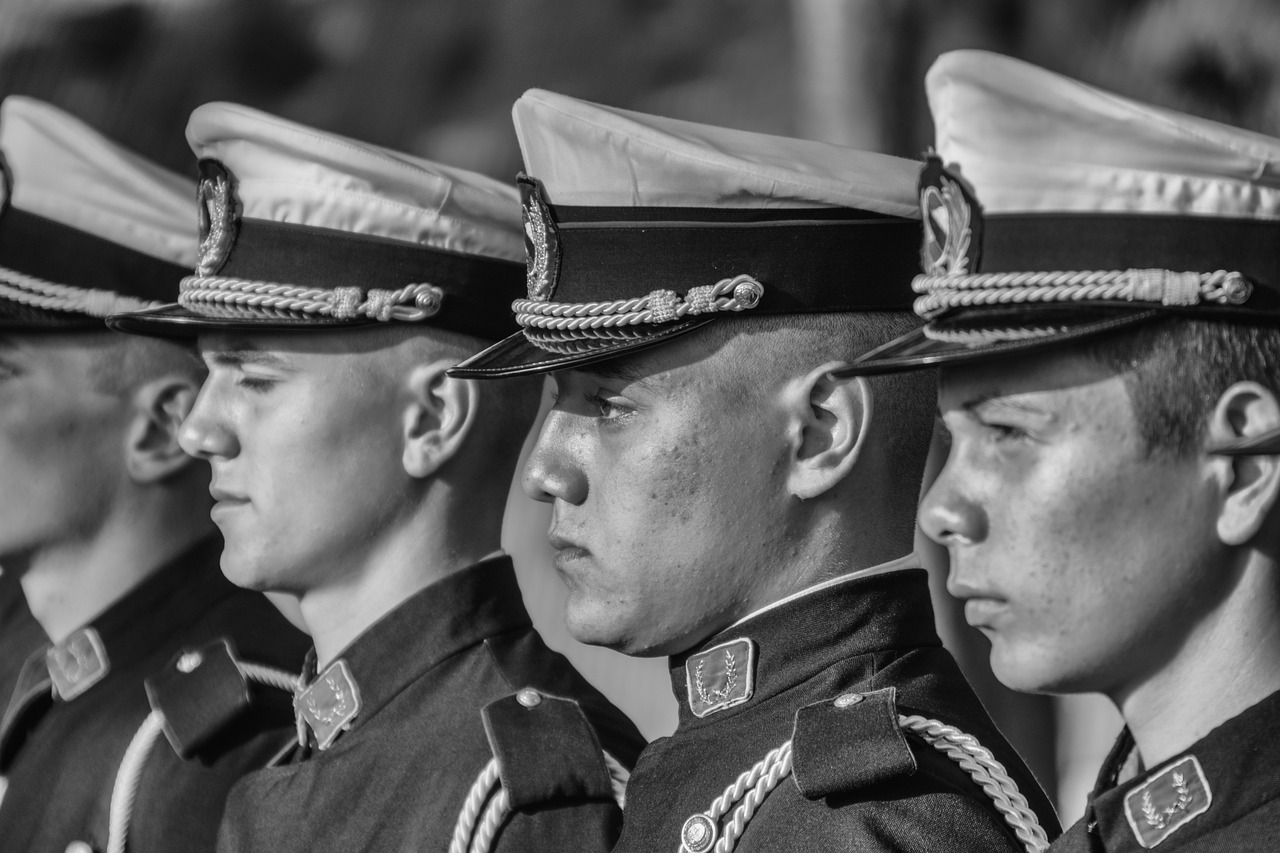
Collaboration with Tech Companies
This article explores the transformative role of artificial intelligence in enhancing military training, making it more efficient, effective, and adaptable to modern warfare challenges.
AI technologies are revolutionizing military training by providing personalized learning experiences, real-time feedback, and advanced simulation capabilities that enhance soldier preparedness and operational effectiveness.
AI-driven simulations offer immersive environments that replicate real-world scenarios, allowing military personnel to practice decision-making and tactical skills without the risks associated with live training exercises.
AI systems analyze vast amounts of data to create realistic scenarios, helping soldiers develop critical thinking and quick decision-making skills essential for success in high-pressure situations.
AI tools provide immediate feedback during training exercises, allowing trainees to understand their strengths and weaknesses, which accelerates the learning process and improves overall performance.
Adaptive learning systems adjust training content based on individual performance, ensuring that each soldier receives tailored instruction that meets their unique needs and learning pace.
Combining AI with virtual and augmented reality enhances training by creating lifelike environments where soldiers can practice skills and strategies in a safe, controlled setting.
Implementing AI in military training can significantly reduce costs associated with traditional training methods, such as travel, equipment maintenance, and resource allocation, while improving training outcomes.
AI algorithms help military organizations optimize resource allocation, ensuring that time and materials are used efficiently, leading to more effective training programs and reduced waste.
Investing in AI-driven training systems may lead to substantial long-term savings by decreasing the need for expensive live exercises and enhancing overall operational readiness.
Despite its benefits, integrating AI into military training programs presents challenges, including technological limitations, data security concerns, and the need for comprehensive training for personnel.
Current AI technologies may not fully replicate the complexities of real combat situations, requiring continuous advancements to enhance their effectiveness in military training environments.
The use of AI raises significant concerns regarding data security and the potential for sensitive information to be compromised, necessitating robust cybersecurity measures to protect military assets.
The future of military training will likely see increased reliance on AI technologies, with advancements in machine learning, data analytics, and virtual reality shaping the way soldiers prepare for combat.
As AI technologies evolve, military training programs will incorporate continuous learning models that adapt to emerging threats and changing operational environments, ensuring soldiers remain prepared for any challenge.
In an era where technology evolves at lightning speed, is becoming a cornerstone of military training innovation. The military recognizes that to stay ahead of potential threats, it must leverage the expertise of the tech industry. By partnering with leading tech firms, military organizations gain access to groundbreaking AI solutions that enhance training programs beyond traditional methods.
These collaborations often result in the development of customized training solutions tailored to the unique needs of military personnel. For instance, tech companies can provide advanced analytics tools that help in assessing the performance of soldiers during simulations, offering insights that were previously unattainable. This data-driven approach not only optimizes training but also fosters a culture of continuous improvement.
Moreover, tech companies bring fresh perspectives and innovative ideas to the table. They are adept at utilizing emerging technologies such as machine learning and virtual reality, which can create highly immersive training environments. Imagine a training scenario where soldiers can engage in realistic combat situations, all within a virtual space that mimics real-world conditions. This not only enhances the learning experience but also prepares soldiers for the unpredictability of actual combat.
Furthermore, these partnerships can lead to cost-effective solutions. By sharing resources and knowledge, the military can reduce the financial burden associated with developing and implementing new training technologies. The result is a win-win situation: tech companies gain valuable insights into military operations while the military benefits from cutting-edge technology without the hefty price tag.
In summary, the collaboration between military organizations and tech companies is not just beneficial; it is essential for modernizing military training. As both sectors continue to innovate and adapt, we can expect to see even more effective training programs that prepare soldiers for the complexities of contemporary warfare.
- What are the main benefits of AI in military training? AI enhances personalized learning, provides real-time feedback, and creates advanced simulations for better preparedness.
- How does collaboration with tech companies improve military training? It brings innovative solutions, optimizes resource use, and reduces costs while enhancing training effectiveness.
- What challenges does the military face when implementing AI? Challenges include technological limitations, data security concerns, and the need for comprehensive personnel training.
- What role does virtual reality play in military training? Virtual reality creates immersive environments for soldiers to practice skills safely and realistically.
Frequently Asked Questions
- How does AI improve military training?
AI enhances military training by providing personalized learning experiences, real-time feedback, and advanced simulations. This allows soldiers to practice decision-making and tactical skills in immersive environments, making their training more effective and relevant to modern warfare.
- What are the benefits of AI-driven training simulations?
AI-driven simulations create lifelike scenarios that replicate real-world challenges, enabling military personnel to hone their skills without the risks associated with live exercises. This not only improves decision-making abilities but also enhances critical thinking under pressure.
- Can AI provide real-time feedback during training?
Absolutely! AI tools can analyze performance during training exercises, offering immediate feedback. This helps trainees identify their strengths and weaknesses, speeding up the learning process and ultimately improving their overall performance.
- What are adaptive learning technologies?
Adaptive learning technologies adjust training content based on individual performance. This means that each soldier receives instruction tailored to their unique needs and learning pace, ensuring a more effective and personalized training experience.
- How does AI contribute to cost-effectiveness in military training?
Implementing AI can significantly reduce costs associated with traditional training methods, such as travel and equipment maintenance. By optimizing resource allocation and improving training outcomes, military organizations can achieve long-term financial savings.
- What challenges are faced when integrating AI into military training?
Challenges include technological limitations, data security concerns, and the need for comprehensive training for personnel. Current AI technologies may not fully replicate the complexities of real combat, and robust cybersecurity measures are essential to protect sensitive information.
- What future trends can we expect in AI military training?
The future will likely see increased reliance on AI technologies, with advancements in machine learning and virtual reality shaping training programs. Continuous learning models will adapt to emerging threats, ensuring soldiers are always prepared for new challenges.
- How will military organizations collaborate with tech companies?
Military organizations are expected to collaborate more with tech companies to leverage cutting-edge AI solutions. This partnership will foster innovation and enhance the effectiveness of training programs, meeting the demands of modern warfare.



















